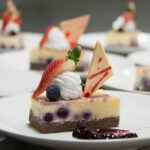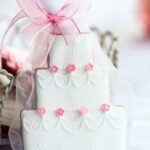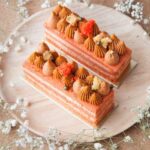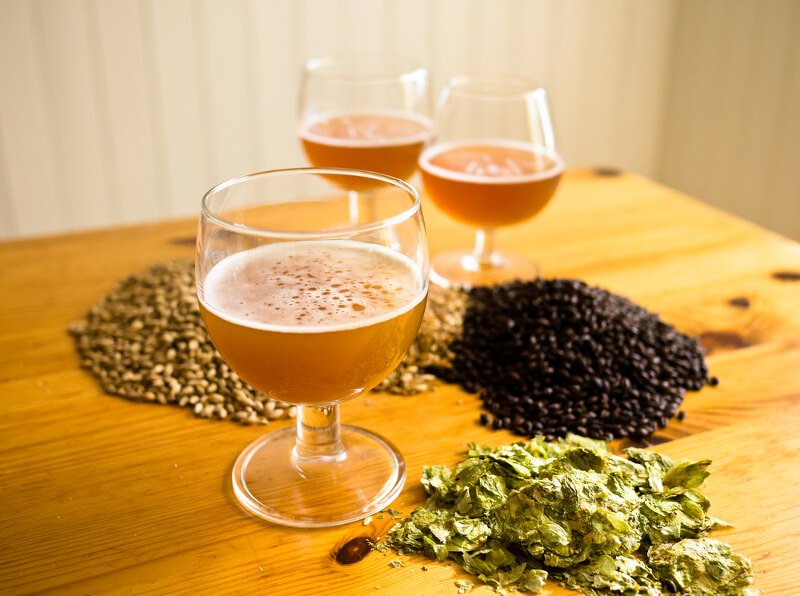Are you looking to learn how to decorate a cake at home easy? Decorating a cake is not only a delightful way to express your creativity, but it can also be a thoughtful and personal touch for special occasions. Whether it’s a birthday, wedding, or any other celebration, the art of cake decorating allows you to showcase your skills and make your loved ones feel extra special.
In this article, we will explore the essential tools and equipment needed for cake decorating and discuss the importance of choosing the right type of cake for your design. We will also dive into basic frosting and icing techniques for beginners and provide creative and easy cake decorating ideas for different occasions.
If you’re eager to achieve professional-looking cake decorations at home, we’ve got you covered with tips and a step-by-step guide to take your skills to the next level. Additionally, we’ll help you troubleshoot common cake decorating mistakes and provide resources for further inspiration and education in the world of cake decorating. Get ready to unleash your creativity as we embark on this journey together.
Essential Tools and Equipment Needed for Cake Decorating
When it comes to decorating a cake at home, having the right tools and equipment is essential for achieving professional-looking results. Some of the essential tools include cake turntables, offset spatulas, piping bags and tips, bench scrapers, and a variety of different cake decorating tools. These tools are necessary for smoothly frosting cakes, creating beautiful designs with icing, and adding intricate details to your creations.
In addition to tools, having the right equipment is also crucial for successful cake decorating. This includes a good quality stand mixer or hand mixer for preparing the cake batter and frosting, as well as cake pans in various sizes and shapes to create different designs. Other important equipment includes cooling racks for allowing the cakes to cool properly before decoration, and a leveler or serrated knife for leveling off the tops of the cakes before frosting.
Investing in high-quality tools and equipment may seem like an added expense, but they can make a world of difference in your cake decorating endeavors. With the right tools at your disposal, you’ll be better equipped to execute a wide variety of decorating techniques and achieve professional-looking results that will impress your friends and family.
Choosing the Right Type of Cake for Decorating
When it comes to decorating a cake at home, choosing the right type of cake is crucial. Different types of cakes lend themselves better to certain decorating techniques, so it’s important to consider the texture, density, and flavor of the cake before you start any decorating process.
Light and Fluffy Cakes
Light and fluffy cakes, such as sponge or chiffon cakes, are great for delicate designs and intricate decorations. Their airy texture makes them easy to work with when it comes to adding layers of frosting or intricate piping.
Dense and Moist Cakes
Dense and moist cakes like chocolate or carrot cake are sturdy enough to hold heavier decorations like fondant or gum paste. They also work well for sculpted or tiered cakes since they can support the weight of additional layers.
Flavor Considerations
In addition to considering the texture of the cake, think about the flavor as well. Certain flavors pair well with specific types of frosting or icing, so choose a cake flavor that will complement your chosen decoration techniques.
By carefully choosing the right type of cake for your decorating project, you can set yourself up for success and ensure that your final creation not only looks stunning but tastes delicious as well.
Basic Frosting and Icing Techniques for Beginners
When it comes to cake decorating, mastering basic frosting and icing techniques is essential for beginners. The type of frosting or icing used can greatly affect the appearance and taste of the cake. One of the most common types of frosting used is buttercream, which is easy to make and versatile in terms of flavor and color. Other options include fondant, royal icing, and ganache, each with its own unique characteristics.
For those just starting out, learning how to properly smooth buttercream onto a cake is a fundamental skill. This can be achieved using an offset spatula for an even finish. Piping techniques are also important to master for creating borders, writing, and intricate designs on cakes. Understanding the right consistency for different types of frosting and icing is crucial for achieving desired results.
Coloring frosting and icing can add a fun element to cake decorating. Gel-based food coloring is recommended as it provides vibrant hues without altering the consistency of the frosting or icing. It’s important to start with a small amount of color and gradually add more until the desired shade is reached.
Mastering these basic frosting and icing techniques sets a strong foundation for anyone interested in learning how to decorate cakes at home. With practice, beginners can gain confidence in their ability to create beautiful and delicious homemade desserts.
| Basic Frosing/Icing Techniques | Beginner Tips |
|---|---|
| Buttercream | Use offset spatula for smoothing |
| Piping | Learn various piping techniques |
| Coloring | Start with small amounts of gel-based food coloring |
Creative and Easy Cake Decorating Ideas for Different Occasions
When it comes to cake decorating, the possibilities are endless. Whether you’re celebrating a birthday, a wedding, or just want to add some extra flair to your dessert, there are numerous creative and easy decorating ideas for different occasions.
Birthday Celebrations
For birthday cakes, consider incorporating the individual’s favorite colors, characters, or hobbies into the design. You can use themed candles, edible glitter, or even personalized cake toppers to make the cake truly special. Consider using colorful sprinkles or edible flowers for a fun and festive touch.
Weddings and Anniversaries
For weddings and anniversaries, elegant and romantic cake designs are often chosen. Consider using delicate floral arrangements made from fondant or buttercream for a timeless look. You can also incorporate metallic accents such as gold or silver leaf for a touch of luxury.
Holidays and Seasonal Events
During holidays or seasonal events, you can have fun with thematic cake decorations. For example, you might decorate your cakes with pumpkins and autumn leaves in the fall, or snowflakes and holly berries in the winter. Use themed cookie cutters to create unique shapes for your decorations.
By tailoring your cake decorations to fit the occasion, you can create a memorable and visually stunning dessert that will be the centerpiece of any celebration. Don’t be afraid to get creative and experiment with different techniques to find what works best for each occasion.
Tips for Achieving Professional-Looking Cake Decorations at Home
While decorating cakes at home may seem daunting, there are certain tips and techniques that can help you achieve professional-looking results. One important tip is to invest in quality tools and equipment such as piping bags, offset spatulas, and a turntable. These tools will make the decorating process much easier and more precise, allowing you to create beautiful designs on your cakes.
Another tip for achieving professional-looking cake decorations at home is to practice your frosting and icing techniques. Start with basic techniques such as smoothing buttercream frosting or creating simple borders with royal icing. As you become more comfortable with these techniques, you can start experimenting with more advanced designs and decorations.
It’s also important to pay attention to detail when decorating a cake at home. Take your time to ensure that your lines are straight, your colors are consistent, and your decorations are neatly placed. Professional-looking cake decorations often come down to the small details, so be patient and meticulous in your work.
| Tools for Professional-Looking Cake Decorations | Importance of Practice |
|---|---|
| Invest in quality tools like piping bags and offset spatulas | Start with basic frosting and icing techniques |
| Use a turntable for more precise decorating | Gradually move on to more advanced designs |
| Pay attention to detail when decorating | Be patient and meticulous |
Step-by-Step Guide to Decorating a Cake From Start to Finish
Decorating a cake can be a fun and rewarding experience, and with the right tools and techniques, you can create stunning designs right in your own kitchen. To begin the process of decorating a cake at home, it’s important to start with a freshly baked and cooled cake. Once you have your cake ready, you will need to gather your decorating tools, including spatulas, piping bags, tips, and a turntable for easier frosting application.
The first step in the decorating process is to apply a crumb coat to the cake. A crumb coat is a thin layer of frosting that seals in any crumbs on the surface of the cake, creating a smooth base for additional decorations. After applying the crumb coat, chill the cake in the refrigerator for about 15 minutes to allow the frosting to set.
Once the crumb coat has set, you can proceed with adding additional layers of frosting or icing to achieve your desired decorative effect. Use different piping tips and techniques to create borders, rosettes, or other intricate designs on the cake.
Finally, add any finishing touches such as sprinkles, edible flowers, or decorative fondant shapes to complete the look of your beautifully decorated cake. With practice and patience, you can master the art of decorating cakes at home and impress your friends and family with your delicious creations.
Troubleshooting Common Cake Decorating Mistakes
Decorating a cake at home can be a fun and rewarding experience, but it’s not without its challenges. From uneven frosting to cracked fondant, there are a number of common cake decorating mistakes that can occur. However, with the right tips and tricks, these mistakes can be easily troubleshooted and avoided in the future.
To help you navigate through common cake decorating mishaps, here are some troubleshooting tips:
- Uneven Frosting: If you find that your frosting is coming out uneven or with visible crumbs, try using a crumb coat before applying the final layer of frosting. This thin layer of frosting will help seal in any loose crumbs and create a smooth base for your final decoration.
- Cracked Fondant: Fondant can be tricky to work with, but cracking can often be prevented by properly kneading the fondant before rolling it out. Additionally, ensure that the cake is completely covered in a thin layer of icing to provide a smooth surface for the fondant to adhere to.
- Sinking Layers: If you’re experiencing issues with your cake layers sinking in the middle, it could be due to underbaking or opening the oven door too early in the baking process. To prevent this, make sure to follow the recipe’s baking instructions carefully and resist the urge to check on your cake too soon.
- Bleeding Colors: When using food coloring for your frosting or decorations, bleeding colors can sometimes occur. To avoid this, use gel-based food coloring instead of liquid ones and allow your frosted cake to fully set before adding any additional decorations.
By implementing these troubleshooting strategies, you’ll have an easier time achieving beautiful and professional-looking cake decorations at home. Remember that practice makes perfect, and don’t be afraid to experiment with different techniques until you find what works best for you.
Resources for Further Cake Decorating Inspiration and Education
In conclusion, decorating a cake at home can be a fun and rewarding experience, allowing you to showcase your creativity and impress your friends and family with delicious treats. By investing in essential tools and equipment, choosing the right type of cake, mastering basic frosting techniques, and exploring creative decorating ideas for different occasions, anyone can achieve professional-looking results at home.
To continue honing your cake decorating skills, there are countless resources available for further inspiration and education. Online tutorials, books, and courses offer valuable tips and techniques from experienced bakers and cake decorators. Joining online communities or forums dedicated to cake decorating can also provide a platform to share ideas, seek advice, and learn from others in the field.
Remember that practice makes perfect when it comes to cake decorating. Don’t be discouraged by common decorating mistakes – use them as opportunities to learn and improve. With dedication and a passion for creating beautiful desserts, you can elevate your cake decorating abilities to new heights. Whether you’re baking for special occasions or simply enjoying a creative hobby, the joy of decorating cakes at home is boundless. Happy baking.
Frequently Asked Questions
How to Decorate a Cake for Beginners?
Decorating a cake for beginners can be made simple by starting with a basic recipe and using easy to handle tools such as a piping bag with a round tip. Begin by spreading a thin layer of frosting on the cake to create a base, then use the piping bag to add simple designs or borders.
You can also use edible decorations such as sprinkles, candy, or fruit to add more visual appeal.
How to Decorate Cake in Home Simple?
Decorating a cake at home can be done simply by using everyday kitchen tools and ingredients. Start with a frosted cake and use items like fresh fruit, chocolate shavings, or edible flowers to adorn the top.
Another easy way to decorate is using powdered sugar or cocoa powder sifted over a stencil placed on top of the cake for an elegant finish.
How to Decorate a Cake at Home Easy Without Cream?
Decorating a cake at home without cream can still be easy and delicious by using alternatives such as ganache, fruit puree, or even just buttercream frosting instead of whipped cream. You can also decorate with fresh fruit slices, nuts, chocolate pieces, or edible flowers for an attractive presentation without relying on cream-based decorations.

Welcome to my blog about home and family. This blog is a place where I will share my thoughts, ideas, and experiences related to these important topics. I am a stay-at-home mom with two young children. I hope you enjoy reading it! and may find some helpful tips and ideas that will make your home and family life even better!





